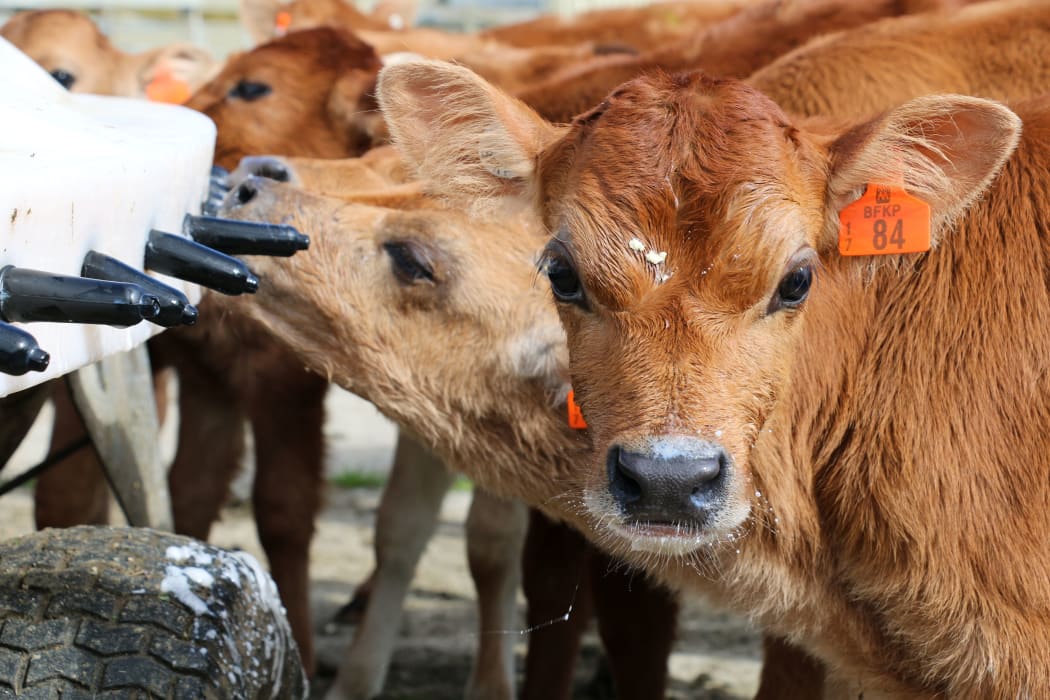
Photo: Cosmo Kentish-Barnes
Calving has been keeping farmers busy over a mostly dull, wet and chilly week weather-wise as hares and rabbits pester growers around Pukekohe.
The stock agent we rang in Northland says it's been the wettest week this winter after the coldest last week. The region has had 80 to 100 millimetres of rain in under 24 hours but when we rang it was a mild 18 degrees, making for great grass growth. He says pasture levels are looking really good compared to a few months ago.
Around Pukekohe there has been a mixture of fine and rainy days but growers are up to date with their workload. Early sown onions are germinating well but are under attack by various birds. Hares and rabbits have been causing serious damage to brassicas. Shooting them during darkness has been effective for gun licence holders but may get them offside with some neighbours and the police. There's potential for the pests to cause major economic harm and the problem is getting worse.
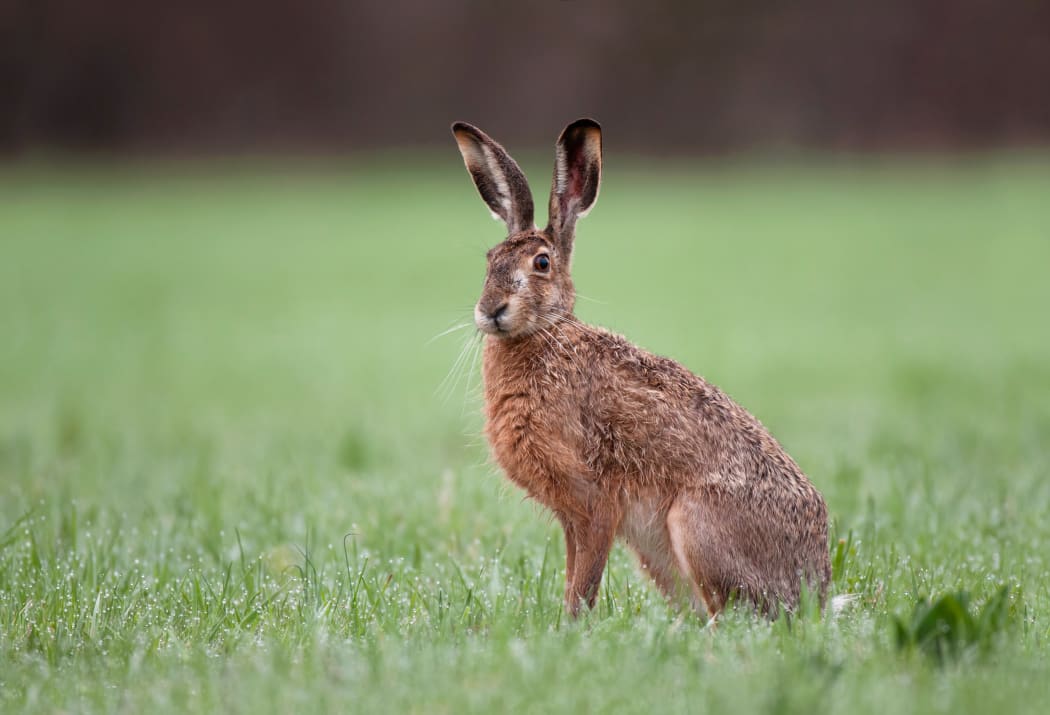
Hares and rabbits have been causing serious damage to brassicas around Pukekohe. Photo: 123RF
It's been a mixed week In Waikato - some heavy showers of rain and fine spells too. A farmer told us he had 50 calves this week so things have become really busy all of a sudden. The milk tanker is due to make its first collection on Sunday night. Covid means National Agricultural Fieldays opened online this week, replacing the usual June extravaganza based at Mystery Creek near Hamilton. The only things you can't do on Fieldays Online is walk around in your gumboots and have a hot dog.
Farmers in the Coromandel have had their third major storm since the start of June. Over 350 mms of rain fell in 24 hours to Friday morning. Farmers around Whitianga were urged to move stock to high ground and prepare for rapidly rising rivers. Our contact says most farmers are well connected and would have moved stock before the weather hit but he says the already sodden ground is unable to cope with the latest drenching.
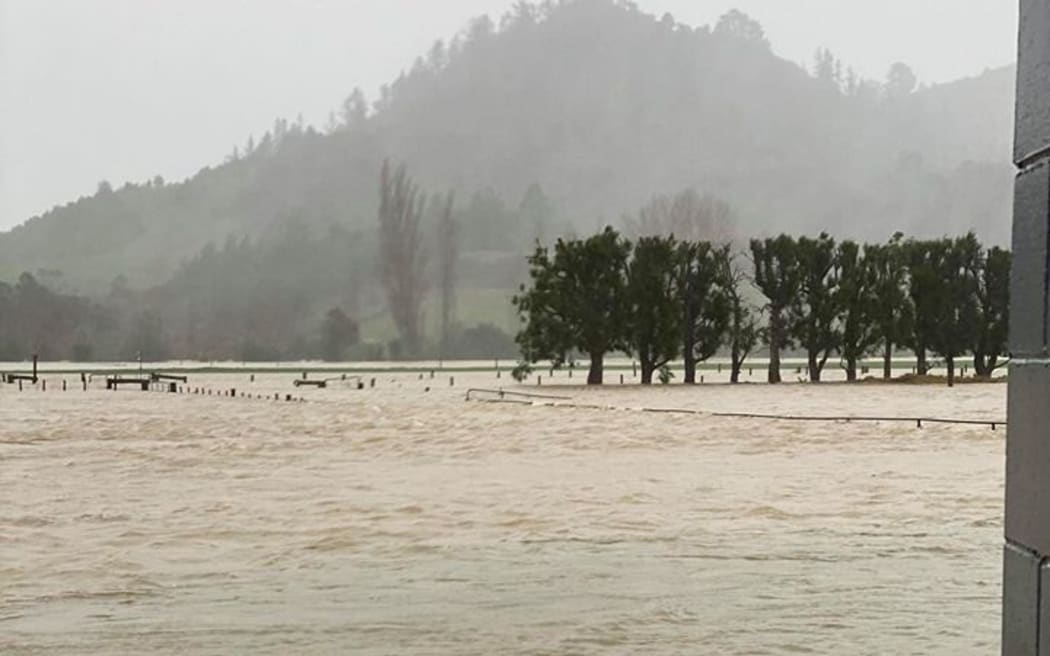
A major storm in Coromandel forced farmers to move stock Photo: Supplied
A farmer in the Bay of Plenty was hiding from the rain when we rang but he says they're not as sodden as further north. There have been a couple of frosts but that's winter. Luckily the baby that was due in his community arrived before the calves - by a matter of hours - and there's a significant number on the ground now ... calves that is! Very little pruning is being done in the kiwifruit orchard. They need a couple of weeks of fine weather but also it will take a wee bit of time to get all the newcomers wielding snips this year up to speed. The farmer is pleased milk and fruit prices are holding up well.
A watery sun was trying to break through in Taranaki when we rang. They're properly into winter now in the region and Thursday was probably the wettest day. There's a little bit of black stuff around - mud that is. Cows are in good condition and farmers are in front of the game, with spring calving a week to ten days in. Mount Taranaki has lost a bit of snow but it still has a nice little cap on. Covid has put paid to the usual agricultural tours for overseas farmers but New Zealand farmers are being encouraged to come instead and find out what makes Taranaki tick.
The farmer we rang in Hawkes Bay has been crutching and vaccinating ewes three to four weeks out from lambing. It's been dull and wet with only a flash of sun this past week. But the rain is needed. The parched land has soaked up a lot. His paddocks are making a good recovery from the drought with the aid of nitrogen which he puts on every two to three years. It's needed coming out of the dry. Farmers further west are still battling though.
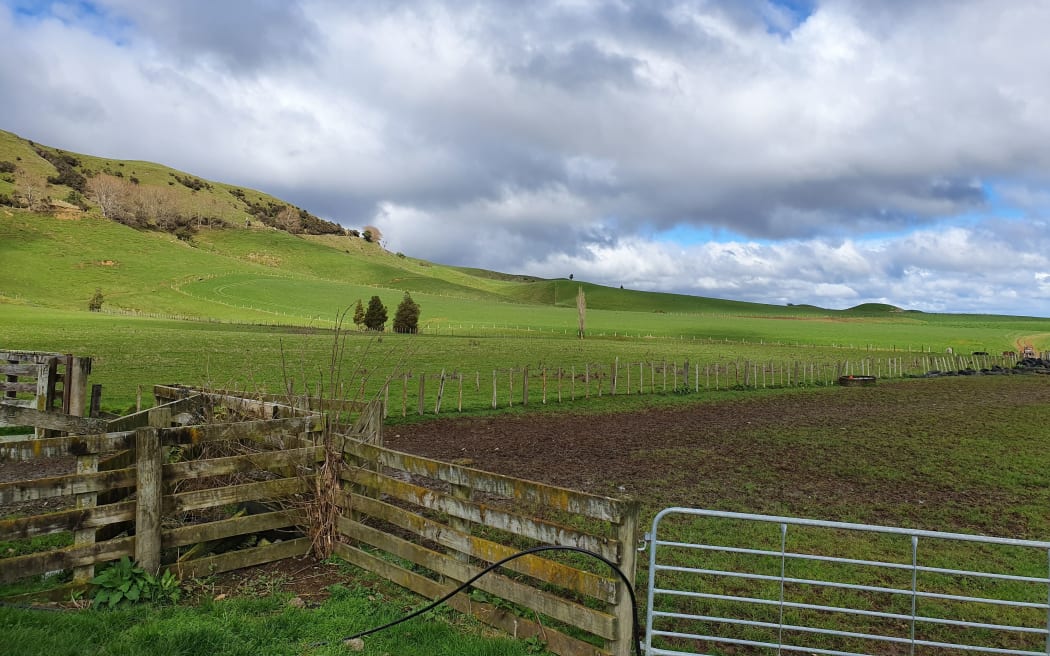
Farm near Pohangina, Manawatu Photo: RNZ/Sally Round
Manawatu has had about 15 millimetres of rain and a cool easterly wind. The farmer we spoke to has 30 calves on the ground. The first of the calf sales started this week with local calves making $230 to $250 for Hereford-Friesians. Pasture levels are looking good.
Farmers have been feeling the lack of sunshine in Wairarapa over the past week to ten days. The grass has a slight yellow tinge and trying to keep hoggets dry for shearing is a challenge on top of the thought of depressed wool prices. Most farmers have finished pregnancy scanning and are ten to15 percent down on last year so on the back of the drought in Hawkes Bay, there'll be fewer lambs around to get famers out of the Covid hole. The feed situation is likely to be challenging in August but scanning reaps good information so farmers can split off ewes bearing singles and make some decisions around rationing feed.
The weather has been a little drier than normal in the Nelson/Golden Bay area. Our contact there said in the past week to ten days there have been frosts and wet weather, just as expected. But in June pasture growth was double the average so farms grew lots of feed and recovered well. The region is looking good for calving. Last week's Global Dairy Trade auction has given farmers a little more confidence that Covid mightn't hit exports markets quite as much as they thought it would.
Marlborough's lower country had an overcast Friday and around ten degrees. The farmer we chatted to was in the middle of lambing which is going well. The twins and singles are looking good but there are a few too many triplets so he can't wait for school to start again and maybe some calf club kids will take some lambs. Now sun is needed to boost the lambs along. Meanwhile in Marlborough high country it was a very chilly minus four degrees. Here they're a month out from lambing so have the critical issue of getting feed levels right for single and twinning ewes. It's even more important this year after the severe drought.
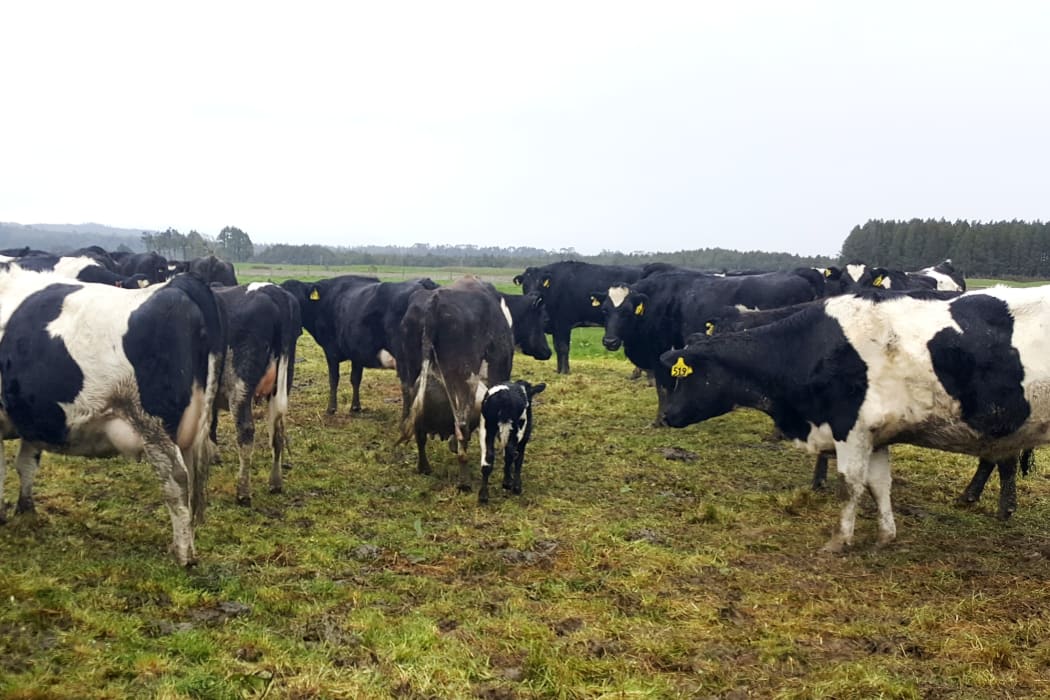
Calving on the West Coast Photo: RNZ/Cosmo Kentish-Barnes
Our West Coast dairy farmer said there's nothing to say about the weather this week except "outstanding". Pretty well no rain for ten days and it's beautiful. Relaxing even! It's dry underfoot for feeding out and the grass is half-pie still growing. Some cows on his farm are springing up. Their udders are obviously getting ready for imminent calving.
Around South Canterbury, temperatures dipped to a very bitter minus six degrees on Thursday morning. When the fog lifted and the sun came out the frost left behind a blanket of white ice on the ground. The farmer we rang told us the main job on the farm at the moment is to try and keep warm. Not much is happening on the farm apart from moving break fences and feeding out silage to stock.
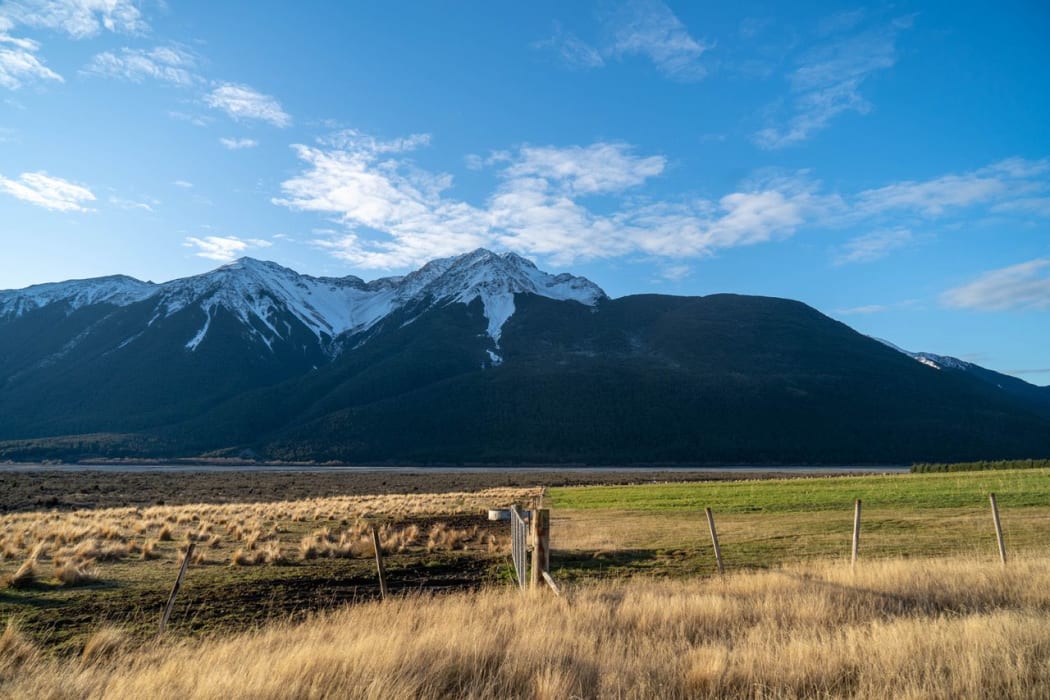
Canterbury Photo: Ryan Winckel
Central Otago's had an interesting week. It's been under fog with highs of minus three and four degrees. Farmers here are still having ongoing issues with the regional council as they're having to re-apply for irrigation rights. They're being told consents may only be given for six years but for farmers that's totally unworkable. They want more like 35 years. Otago has had a big improvement weather-wise on the week before when 50 millimetres of rain arrived but that's nicely soaked away and this week there have been light frosts and reasonable days, although temperatures haven't reached double figures. The district is poised to go either way in terms of feed levels. Because of a tough autumn there's not much supplementary feed on farms. If the weather turns nasty there's not much wiggle room. Staff supply is a real concern. Farmers feel it's a bit unrealistic to expect people used to heaters and office work to suddenly cope outside. Farmers wouldn't go too well in front of a screen all day either, they say.
Southland's been really frosty - temperatures below zero and foggy in the morning but once the fog's lifted it's been nice. Feed is tight and some farmers are finding it hard to source extra grazing.
On the Farm is a weekly wrap of farming conditions around New Zealand

